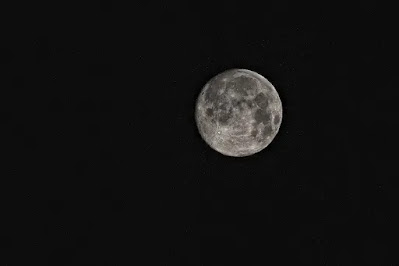A penumbral eclipse can be seen, when the Moon passes through Earth's outer shadow, on Monday, November 30, according to NASA.
The Moon will be at its fullest for only a moment — on Monday, that happens at 4:30 am EST (9:30 UTC) — but the Moon will appear full for three days: from Saturday night through Tuesday morning (November 28 to December 1).
Meanwhile, sky gazers need to remember three times to catch the penumbral eclipse: It starts before the full moon at 2:32 am EST (7:32 UTC); reaches its maximum at 4:42 am EST (9:42 UTC), when 83 percent of the Moon will be covered with Earth's faint shadow; and ends at 6:53 a.m. EST (11:53 UTC) Monday morning.
Penumbral eclipses are different from total or partial eclipses. During a total lunar eclipse , Earth passes directly between the sun and moon, blocking the sun's light from reaching our natural satellite.
On the contrary , during a partial eclipse, the Moon passes through part of Earth's inner dark shadow, known as the umbra.
Finally, in a penumbral eclipse, the Moon passes through part of Earth's outer, fainter penumbral shadow.
November's full moon, known to many as the beaver moon, comes late in the month this year because October had two full moons; the second moon, a blue moon, was the first time in 76 years.
Other names for November's full moon include the cold moon, frost moon, winter moon, oak moon, moon before Yule and child moon.
The full moon will also be celebrated during Kartik Purnima (a Hindu, Sikh and Jain cultural festival, celebrated differently by each culture), Karthika Deepam (a festival of lights observed by some Hindus), Tazaungdaing Festival Moon (observed by Bhudists in Myanmar, formerly Burma), and Ill Poya (celebrated in Sri Lanka), NASA reported.
The beaver moon is the last full moon before the winter solstice, the shortest day of sunlight in the Northern Hemisphere, which falls on December 21 this year.
To those who miss November's moon, they can always plan to see the last full moon of 2020, which will light up the night sky at 10:28 pm EST on December 29 (3:28 UTC on December 30).
Click link Live Science. To Read the original article here.







0 Comments